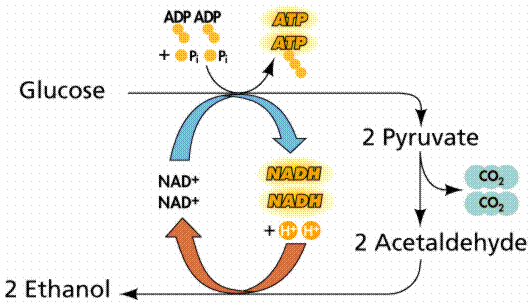This content is all from grade 12 biology text book in A.Y Jackson S.S
Nelson biology 12
C4 vs CAM plants
C4 photosyntehsis - a photosynthetic pathway of carbon fixation that reduces the amount of photorespiration that takes place by continually pumping CO2 molecules (via malate) from mesophyll cells into bundel-sheat celss, where rubisco brings them into the C3 Calvin cycle
- Sugar cand and corn, member of grass faimly, are examples of C4 plants
- In this process, an enzyme called phosphenolpyruvate carboxylase first catalzyes the addition of a Co2 molecule to a three-carbon molecue called phosphenolpyrubvae (PEP), forming four-carbon molecue oxaloacetate (OAA). This is why hte process is called C4 photosynthesis or the C4 pathway.
-The C4 patheway uses almost twice as much ATP as the C3 pathway to produce glucose, but without this mechanism, photorespiration would reduce the glucose yield to less than half that produced by the C3 pathway.
-Key words to know ' Oxaloacetate/Plasmodesmata/PEP/
*This process is advantageous in hot tropical climates where photorespiration would otherwise convert more than half of the glucose prodcued back to CO2
Crassulacean acid metabolism (CAM) - a photosnythetic mechanism in which stomata open at night so that plants can take in CO2 and incorporate it into organic acids, and close during the day to allow the organic acids to release CO2 molecules that enter C3 Calvin cycle to be fixed into carbohydrates.
-Water-storing plants (known as succulents) such as cacti and pineaaples, are examples of CAM plants
-Closing stomamta during the day helps conserve water but prevents CO2 from entering the leaves. In the dark, when stomamta open, the plants take in CO2 and incoporate it into C4 organic acids using the enzymes PEP carboxylase.
-This occurs in a hot,dry and desert environment.
Comparison
1) In C4 plants, such as sugar cane, Co2 is first incoprated into C4 organic acids in mesophyll cells. The C4 organic acids enters bundle-sheath cells throguh cell-cell conncetions and then releases carbon dioxide, which is fixed via the Calvin cycle.
2) IN CAM plants, such as pineapples, carbon fixation into organic acids occurs at night, and the Clavin cycle occurs in the day.

